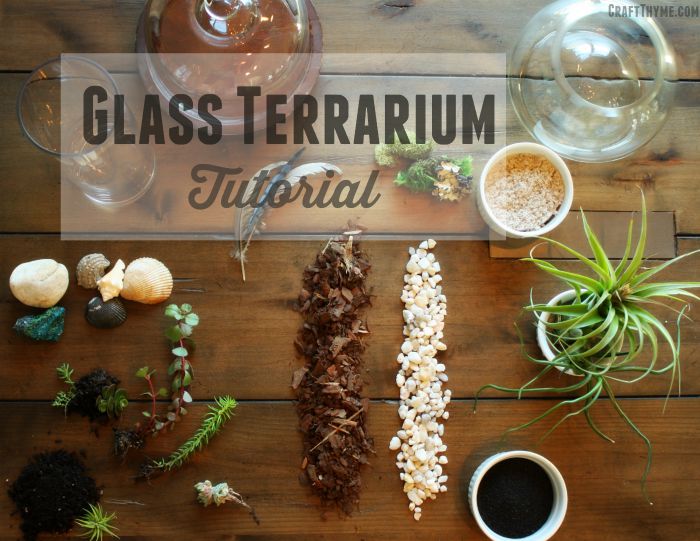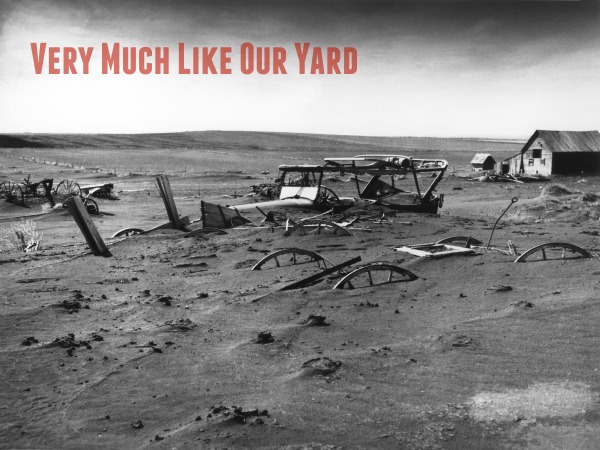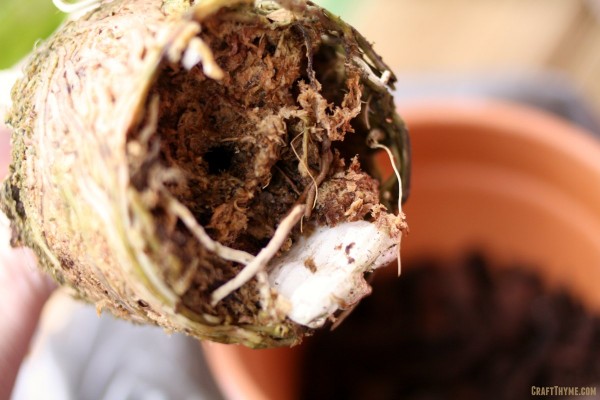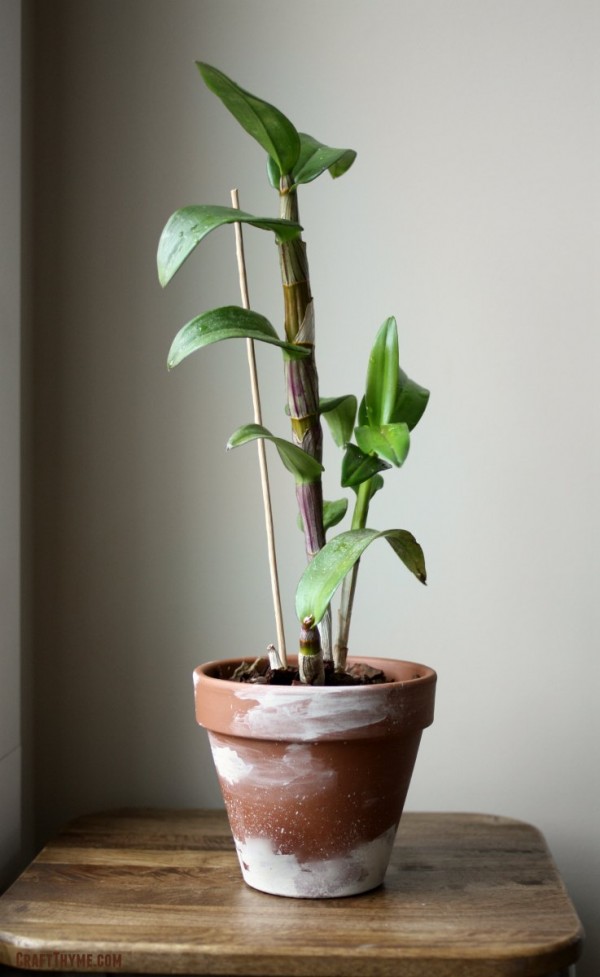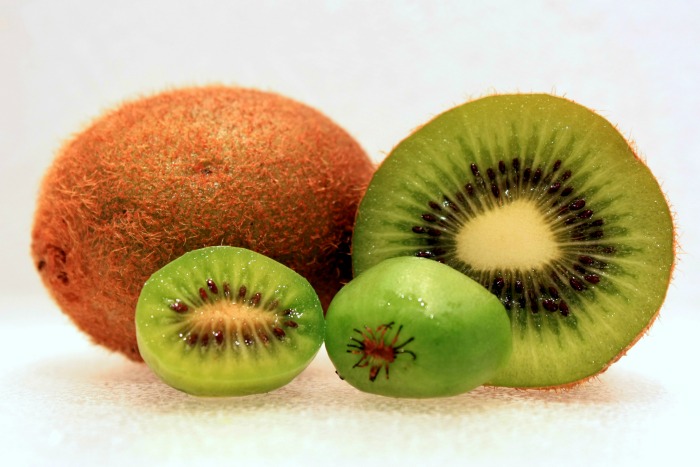
Did you know there was such a thing as a grape kiwi (aka baby kiwi, kiwi berry, or hardy kiwi)?! Is it possible to get almost fan-girl squeely over a plant? Did you know that this kiwi not only comes in green and red, it grows in temperate zones? Oh yes folks! I can grow a kiwi in zone 6. A teeny tiny kiwi that you do not even have to peel! There are actually larger hardy kiwi’s, but this post isn’t about them. This is about the adorable grape kiwis.

The Low Down on Grape Kiwi’s
Grape Kiwis are a hardy kiwi type (Actinidia arguta). Say ak-ti-NID-e-a ar-GU-ta three times fast. The tiny kiwi’s grow in groupings that look much like grape bunches. They have thin edible skins and come in the traditional green kiwi color and also a red shade. Descriptions of the fruit are sweeter kiwi flavor with hints of pineapple. Yum!
These vines likely originated in Japan, China, or Russia which means they can survive temperatures of -34. Yippy for zones 5-9! Many of the cultivated vines you can buy have been bred in Russia, which, seems kind of cool. Maybe even give me some garden cred: “Check out my special Russian Kiwi!” I always picture scenarios where I am showing my lawn off to other gardeners… When in reality I am pretty sure I drive everyone around me nuts with my love of plants.

The deciduous vine grows glossy green leaves with scented white flowers. In perfect conditions you can have a 20 foot vine in a growing season so careful trellising can give you an ornamental attractive vine. Sitting in the shade of softly scented vine sounds like a summer pleasure to me. Bonus, the flowers and scent should be attractive to butterflies. Fruit should be ripe in the fall for fresh eating.
Edit: I just ended up buying these three kiwis! I can’t wait to see how they do*:
How to Grow
Alright, there is a downside to the grape kiwi or maybe an upside depending on your space. You need to have at least 2 vines. Male and female (romantic lover vines ;)) are a must if you want to produce the fruit. Luckily one male is up to the challenge of pollinating anywhere between 6-8 female vines. That means you can have a red grape kiwi and a green grape kiwi and one male will work for both of them.
I have read conflicting information on how far to place the male and female plants away from each other. Most information points to one male being able to pollinate 8 female plants. You’ll need to space these suckers out because if they have the right conditions a single vine can grow 20 feet in a year. WOW! Sounds like a great way to make a vining screen, just remember they are deciduous so all the leaves will disappear in the winter. The recommended spacing is 10 feet apart. I personally am going to plant mine much closer, but I am into backyard orcharding so I plan to prune, prune, prune to keep these babies in shape and in size. WHICH! Is highly recommended. Do not forget this is a vigorous plant that grows for years. Have a sturdy trellis! We built one with 4×4 posts in concrete. Additional bracing to match our composting fence and 14 gauge wire with tightners (turnbuckles). This puppy is going no where.
Planting itself seems a bit finicky. Like every plant under the sun it needs organic, well draining soil. BUT unlike most plants this one NEEDS it. Apparently, they originally grew in forest type settings and are used to having a lot of organic matter and trees to climb. Additionally, heavy wet soils contribute to crown rot. On top of that site selection is muy importante to this plant if you want to get fruit. Sure they are hardy, but their spring growth is very frost sensitive. So you are going to need to find a location that keeps it cool as long as possible so it doesn’t come out of dormancy till the last minute and still gets full sun. Sounds like fun right? So here is my plan to place this plant in a zone 6b-7a. The mountains of Western North Carolina where I am assured to have 80 degree weather followed by a snowstorm in spring and I somehow managed to have a house built on a clay shelf so I have to deal with basically everything that will make this a PITA to get going.
- Dig a much deeper hole and put lots of soil amendment (tiny bark shavings) at the bottom. Layer in dirt and compost and plant the kiwi plants slightly above the ground line. Hilling them up will help with the drainage but I am going to have to remember to mulch the hell out of them in fall to protect the first year roots…
- The trellis site is on the southwest side of my house set slightly back. That means that it gets shaded in the mornings and some even in the afternoons but gets some amazing direct light during the day.
- We are going to use the male to train on our porch to the west side. First, he doesn’t have to be quite as protected. Secondly, you can prune the heck out of him. He just needs enough growth to set flowers. Finally, we will get the added benefit of some shade in the afternoons where our porch mostly bakes. In the winter we will still get the warm sun since the vine will lose its leaves.
I’m game to try these grape kiwis though from the planting info they seem like they may need a little extra care than a beginning gardener might want to try. Just being honest, I’m a tiny bit nervous about this purchase, but almost everyone agrees that if you can get them off to a decent start they are easy after the first year.

Kiwi Berry Care
Assuming that everything grows off without a hitch (Get it? har, har, har) the care is not that big of a deal once you get them established. Pruning the growth if you have a small space becomes incredibly important. You will want to train a central vine and then let it umbrella shape from there. Once it gets to the top of your trellis cut it off and focus on keeping it that height. The first year or two prune for shape and prune regularly throughout the growing season. Tie the main branches to the trellis to keep them from getting wound around. Small branches can twine without worry of causing bad growth later on. After the first couple of years you can read in depth articles about the best way to develop fruiting wood. Lots of opinions out there, but by that time you’ll be a seasoned kiwi grower able to experiment with different choices. Sources disagree on how long each variety takes to set fruit. I have read anything from year 2 to year 5! So I’ll update this with my own experiences later. Remember that it likes a lot of organic matter so side dress with compost regularly throughout the growing season and in the fall and spring like other fruit trees and bushes.
Once you get past the initial hard phase of growing hardy kiwis the vine is supposed to last for years and years. Just prune, fertilize and repeat. Flowers will set fruit that ripens September through October depending on variety.
So, I’m set to try my hand at growing a grape kiwi. This hardy plant should be good to go if I can get it established. Wish me luck on my tiny, hardy kiwi experience.
